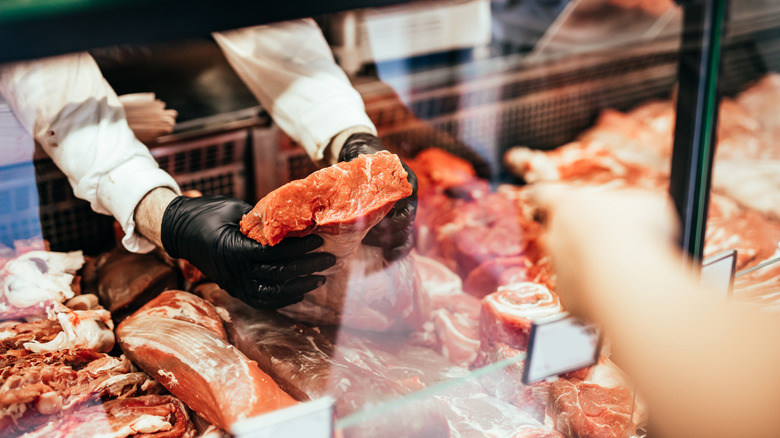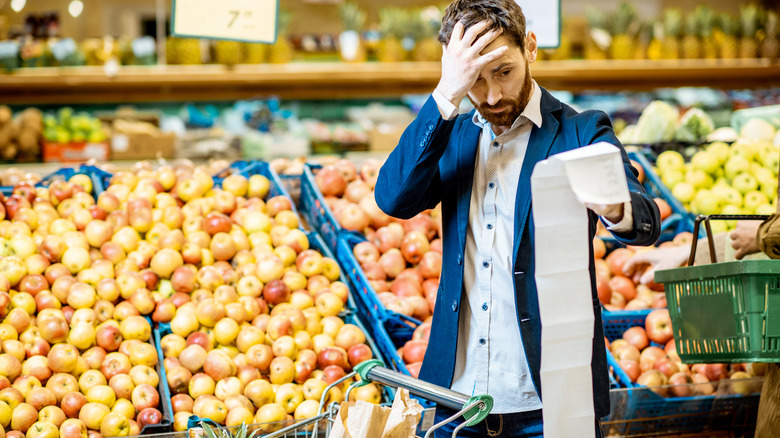What Biden's New Meat Production Plan Means For Your Next Grocery Trip
If you're seeing meatless Mondays increasing in popularity recently, it's probably not just because more people are going vegan. A more likely cause may be that consumers nearly have to mortgage their house to pay for a pack of rib eyes. America's meat industry has taken some hard hits since the onset of the pandemic, and consumers' wallets are paying the price. There is hope on the horizon for carnivores, however, as the Biden-Harris Administration has put a plan into action to improve the meat market.
To give some context, the initial shutdown caused by the pandemic in 2020 wreaked havoc on the meat industry, affecting everything from staffing the production facilities to a rollercoaster demand for the food source (per CNBC). Labor shortages, supply chain issues, and uncertainty about future demand caused facilities to scale back on their meat production — and this decrease in production had long-term effects, evidenced by meat prices going up 20% from the Fall of 2020 to 2021.
Even in the pre-pandemic before times, prices were increasing a noticeable amount. So much so that the United States Department of Justice indicted multiple poultry producers for a "conspiracy to fix prices and rig bids" on chicken products. Recently, the Biden Administration has acknowledged the issues at play in the meat industry, identifying supply and demand problems as well as an issue with large conglomerates monopolizing meat production and distribution. The administration has now come out with a four-part plan aimed at fixing the inequities in the marketplace.
Who will benefit from President Biden's plan?
Among other inflation-related issues, the Biden-Harris Administration is very aware of the hit that consumers are taking each time they pay their grocery bill. Their new "Action Plan for a Fairer, More Competitive, and More Resilient Meat and Poultry Supply Chain" hopes to give independent meat producers a leg up while bringing prices down for consumers (via Food & Wine).
The administration plans to start with the meatpacking companies themselves. The beef, poultry, and pork marketplaces are each controlled by four large companies that buy meat from farmers, process it, and sell it to grocers. The White House said, per Food & Wine, "When dominant middlemen control so much of the supply chain, they can increase their own profits at the expense of both farmers who make less–and consumers who pay more." This new plan aims to take out the middleman by investing $1 billion in independent meat processing companies.
This large investment in independent meat production facilities ushers in the rest of the administration's four-part plan. For farmers, that means increasing the number of facilities they can sell meat to, which gives them leverage to negotiate fairer prices. That then trickles down to the consumer, who will start to see a decrease in the cost of packaged meat at the store. There's also a bonus addition to the Action Plan requiring meat to be raised and processed in the United States before receiving a coveted "Product of USA" label. Consumers can enjoy buying a product entirely produced in the States while experiencing less sticker shock at the meat counter.

